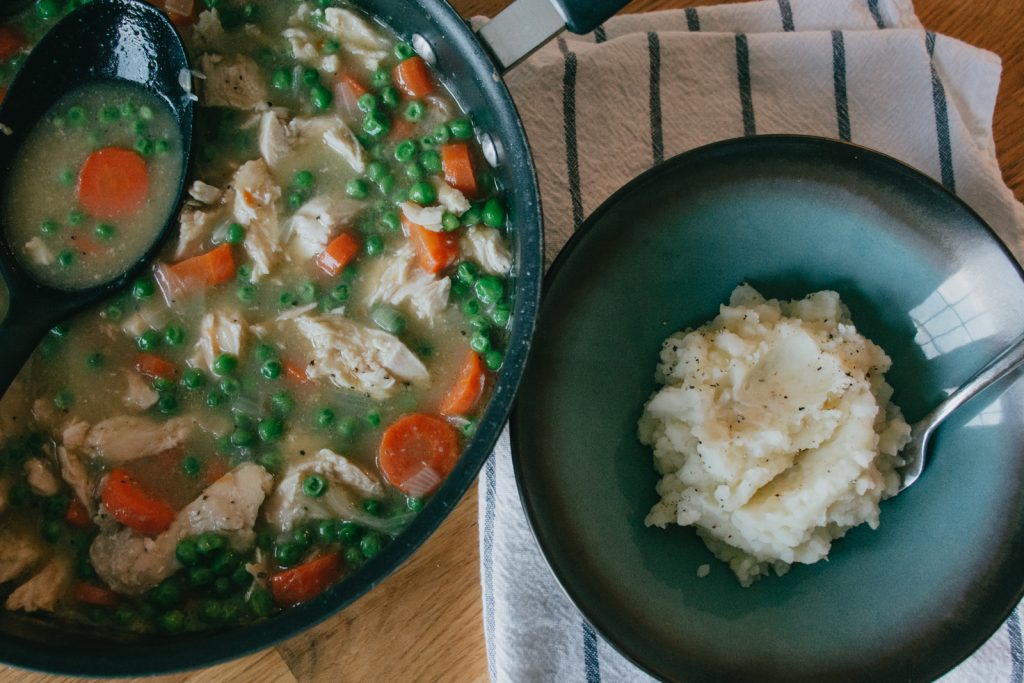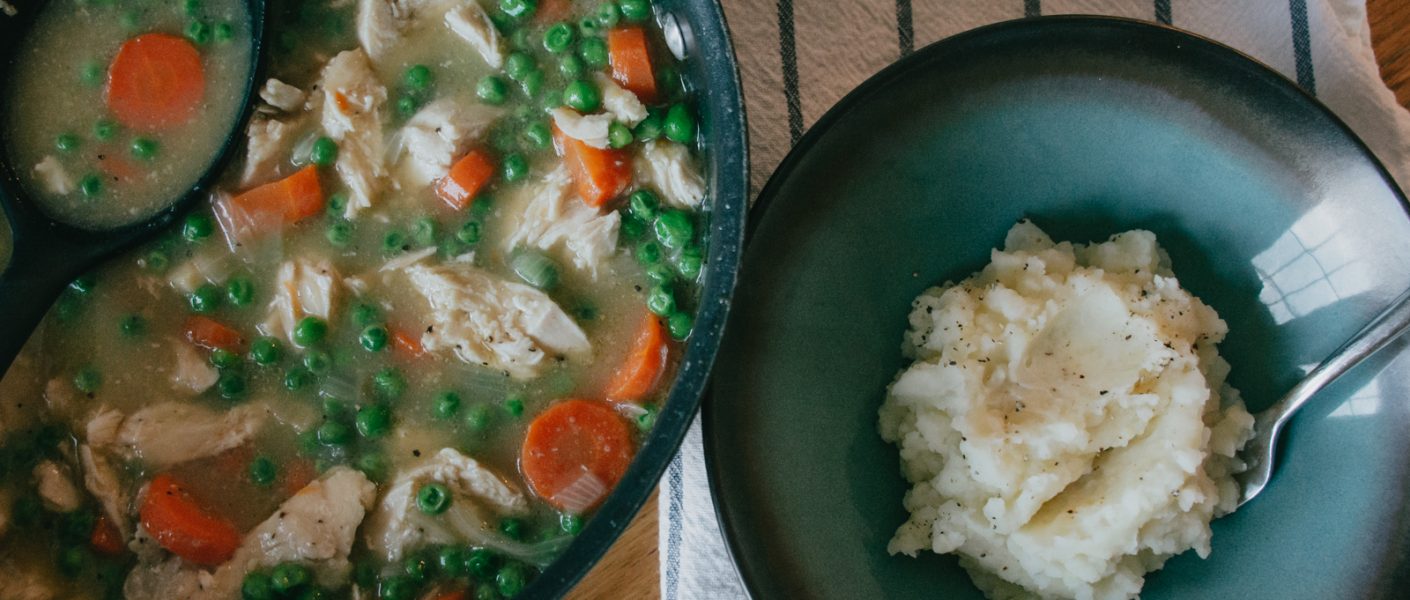
Note: There are affiliate links to books and products mentioned below, which means I may get a small commission on any purchases at no extra cost to you.
Although I haven’t (yet) done the next two planned posts in my Food Storage 101 series — the ones on long-term food storage and water — I HAVE been continuously working on stocking our short-term food storage pantry so that we have enough to last at least a few months without going to the store. Our eventual goal is to have 3-6 months’ worth in the short-term food storage and 12+ months worth in the long-term food storage, but we’re not quite there yet.
However, as I’m sure many of you have noticed as well, there have been some food shortages where we’re at (especially considering that we’re extremely limited on grocery options to begin with, living in the country), and as no one really knows what the next few months will bring, I think it’s prudent to continue to add to our pantry where possible and also be continuously cooking from our pantry so that nothing is wasted and so that we continue to become familiar with cooking based on what we have on our shelves rather than cooking based on meal plans that involve going to the store.
For years, I’ve usually done just one major shopping trip per month (where I spend 75-80% of my grocery budget), and just make a few smaller (think: $20-$30) trips every 10 days or so afterwards. Because I’ve done this for so long, many of the meals I make don’t rely on things like highly perishable produce and certain kinds of dairy, but rather on things that keep for a lot longer. Even the fruits and vegetables we tend to buy mostly all last a relatively long time, such as carrots, onions, potatoes, apples, oranges, etc. While I initially started employing this method of grocery shopping to save money (because it kept me out of the store), it also had the unintended (but welcome) side effect of making me really good at shopping my own shelves and making do with what I have.
Additionally, thanks to an experiment I did a few years back, I’ve also become rather adept at making substitutions while I’m cooking, which is a skill that has proved highly valuable during these times when I’m already limiting my trips to the grocery store AND often finding that they don’t have particular ingredients in stock when I do go. This wasn’t a skill I learned overnight (and it definitely has taken a lot of trial and error!), but between Google and my own experimenting, I feel fairly confident in my ability to pull together a meal based on what I have at home without having to rely on making a trip to the store.
For instance, if I didn’t have fresh or frozen whole chicken breasts for the recipe below, I would just use canned chicken instead (or turkey, if I happened to have that instead). If I didn’t even have that, I would just increase the amount of vegetables in it, maybe adding something like potatoes in lieu of the meat, and serve it with bread instead of over the mashed potatoes.
You could also substitute water + 4 tsp. bouillon for the chicken broth called for below, or–even better–use the water that you cooked the chicken in and just add some extra bouillon to that. This soup would also be delicious with dumplings instead of over mashed potatoes, or just served as a regular soup with some bread on the side. Heck, you could even add a cup of rice or noodles to the soup if your mood so dictated. In other words, the possibilities are endless — don’t feel the need to be tied down to always making your recipes exactly as written!
I’m not a doomsday extremist, but I do think it behooves us all to make sure we’re comfortable learning how to make do with what we have, keep a well-stocked pantry, and make substitutions where necessary. This recipe below is one I basically invented based on some heavy amendments I did to another recipe that we ended up really loving the results of, and obviously feel free to amend it yourself to satisfy your own needs or what’s readily available in your own pantry!
As for our current plans, we are still working on stocking our short-term food supply, and I’m currently working on creating 72-hour kits for each member of our family as part of our current quest to become more prepared as a family for whatever might happen. Once the kits are finished, I’ll start acquiring the food-grade storage buckets and oxygen packets for our long-term food storage, as well as start putting aside money to get a couple 55-gallon water storage buckets. Even though we still have several months of planning and saving to go before our emergency preparedness feels more “complete,” I already feel so much more at ease knowing that if crazier things are still down the line this year, we’ll at least have enough to feed and provide for our family.
If you’re new to food storage in general but want to get started, check out my first post in the series about how to actually afford to buy all this extra food and my second post all about how to put together a short-term food storage “revolving pantry” for your family. I know it can seem overwhelming, but ANY steps you take towards building up food storage for your family is better than nothing, even if it’s just picking up a few extra cans and jars of peanut butter every time you go to the store!
If you’re looking for some further inspiration and resources on this subject of making do in the kitchen, I absolutely love the book An Everlasting Meal: Cooking With Economy and Grace. It waxes a bit romantic/poetic on the subject of how to make simple meals based on whatever you might have at hand, but it is excellent and has a ton of practical tips that anyone can use. I’ve also found the book A Year Without the Grocery Store to be a valuable resource not just for how to build up your food storage, but also for the recipes it includes based exclusively on shelf-stable foods. I myself have also done several other posts (and recipes) on this subject, which you can find in my Cooking Economically series, my 100 Hours in the Kitchen Challenge series, or the interview I did with my mom about how she made a very limited budget stretch to feed a family of 8.
Onto the recipe!

Thickened Chicken Soup Over Mashed Potatoes
Ingredients
- 2 skinless, boneless chicken breasts
- 3 Tablespoons butter
- 1 Tablespoon flour
- 1 small onion, diced
- 3 large carrots, peeled and chopped
- Dash celery seed or celery salt (or you could dice up 1-2 celery stalks and add them with the carrots)
- 4 cups chicken broth
- 1 teaspoon chicken bouillon
- 1 cup frozen peas
- 1/2 teaspoon salt
- 1/4 teaspoon pepper
- Mashed potatoes (see note below for my favorite way to prepare them)
Instructions
- Put the chicken breast in a pot of water, with there being just enough water to cover the chicken. Put it on high heat until the water starts to boil, then turn the heat to low and cook for 10 minutes. After 10 minutes, cover pot and let chicken steam for 10 more minutes. (Conversely, you can also cube the raw chicken and cook it with the onion…whichever method you prefer.) Make sure to check that the chicken is no longer pink after the 10 minutes (or just stick a meat thermometer in it — this is the one I have and love — and make sure the middle of the chicken is at least 165 degrees). Note: If you’re working with frozen chicken, you will need need to boil it on low for longer than 10 minutes. Conversely, if you’re working with canned chicken, you’ll just add it in Step 5 and skip all this entirely.
- Meanwhile, melt butter in a small Dutch oven or stock pot and add onions and carrots. Let cook on medium heat for 4-6 minutes, or until onions are soft.
- Add flour and mix thoroughly over the heat for about a minute.
- Add broth, bouillon, celery seed, salt and pepper. Bring to a boil, then turn down the heat and simmer until carrots are tender (around 12-15 minutes).
- When the chicken is finished, cut or tear it into bite-size pieces and add it to the soup, along with the cup of frozen peas. Bring the soup back up to a low simmer for a minute or two, or until the peas are soft.
- Serve over hot mashed potatoes.
Note on the Mashed Potatoes: My absolute favorite way to cook mashed potatoes is in the Instant Pot using this recipe. You basically just cut up a couple pounds of potatoes (around 8-10 small to medium ones), add enough cold water to the pot to barely cover all of them, add two teaspoons of salt, then cook them in Manual mode for 8 minutes (make sure you set your Instant Pot to “seal” before you start cooking). Then you just do a quick release of the pressure, drain out the water, use a spoon to stir them around (which will basically mash them in the process), and add butter, milk, salt, pepper, and sour cream to your liking. Perfection! Or, if you don’t have fresh potatoes and happen to have instant potatoes in your pantry, you could obviously use those instead.

Are you seeing food shortages at the stores near where you live? Are you changing any of your shopping or cooking habits to accommodate?
Drop a comment below and share your experience!








